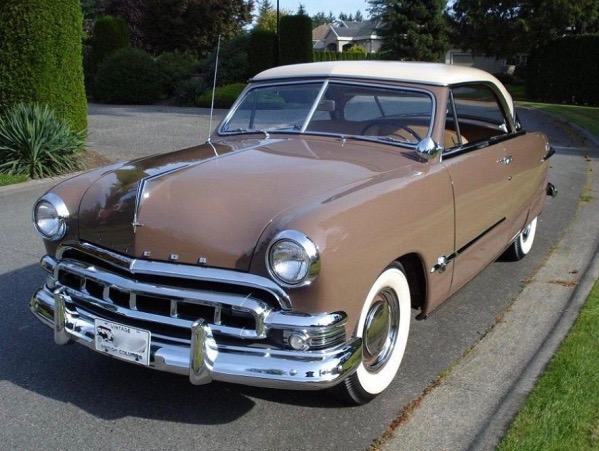It's more than a tendency, yet not an iron-clad rule: nevertheless, the greater the prestige and the higher its purchase prices, the more likely it is for an automobile brand to retain characteristic styling cues. Think Rolls Royce, Mercedes Benz and Packard.
For much of its existence, General Motors'
Buick was next-to-the-top make, slotted just below Cadillac in the firm's hierarchy of brands. Even so, it wasn't until the 1942 model year that Buick stylists under the leadership of GM's legendary Harley Earl established styling themes that have been carried over to the present -- though sometimes they were abandoned, only to be revived.
I wrote about putting some of these themes on a really small car
here, and
here I wrote about how Buick broke away from its signature grille theme (but later returned to it).
Buick's collection of styling details was strong during its heyday. From 1942 through most of the 1950s, Buicks were easily recognizable to most people and not just car buffs. Was there a model year where Buick themes were at their purest, where the cars might be considered archetypical Buicks?
That is a matter of judgment. Mine is that the 1952 Buicks were the most Buick-like. Let's take a look the senior models, the Supers and Roadmasters, that had a different body than lower-priced Buick Specials (click on images to enlarge).
Gallery
The first three images are photos I took of a 1952 Buick Super Riviera a few years ago in the upper Napa Valley in California. The swath of chrome along the side is what Buick called a Sweepspear, a strong Buick identifier. On 1950-53 Buick bodies of the type shown here, it echoes the dropped front fender line. It also recalls the fender line of 1942-48 Buick Roadmasters. The Sweepspear was introduced on some 1949 models and carried through the 1958 model year. Hints of it reappeared occasionally in later years.
Bold, vertical chromed "teeth" on the grille first appeared on 1942 Buicks. They were dropped for 1955, but reappeared many times since, including recent years. The hood sculpting that drops over the nose of the car and then helps frame the grille opening is a continuation of a practice (details differ) dating to the early 1930s or even the early 20s (if you squint your eyes and use your imagination). This ended following the 1956 model year, perhaps because it was thought to look old fashioned and/or too decorative.
Rear portions of 1952 Buicks had little in the way of long-term iconic details. However, the brake light ensemble on the trunk is a carryover from the mid-1930s (that was gone by 1954). The sculpting on the rear fenders was found on 1950-53 Buick Supers and Roadmasters, but disappeared on the 1954 restyling.
Mecum Auctions photos of a 1952 Buick Super four-door sedan.
Another '52 Super four-door, this on a contemporary ad card.
A brochure spread showing 1952 Buick Roadmasters.
My reasoning for choosing 1952 as the archetypical year for Buick styling is as follows. 1950 Buicks featured large grille teeth that draped over the front bumper, a one-year-only affair that I wrote about
here. 1951 Buicks were very similar to '52s, but Roadmasters had a swath of chrome aft of the Sweepspear that wasn't part of the theme: the 1952 version was more pure. For 1953, Buick raised the central part of the front bumper, thereby diminishing the grille. Also, headlights were grouped with turn indicator lights in the manner of the XP-300 show car. This was continued for 1954, then dropped, so it can't count as being part of a long-lasting theme. So 1952 is is.



















































